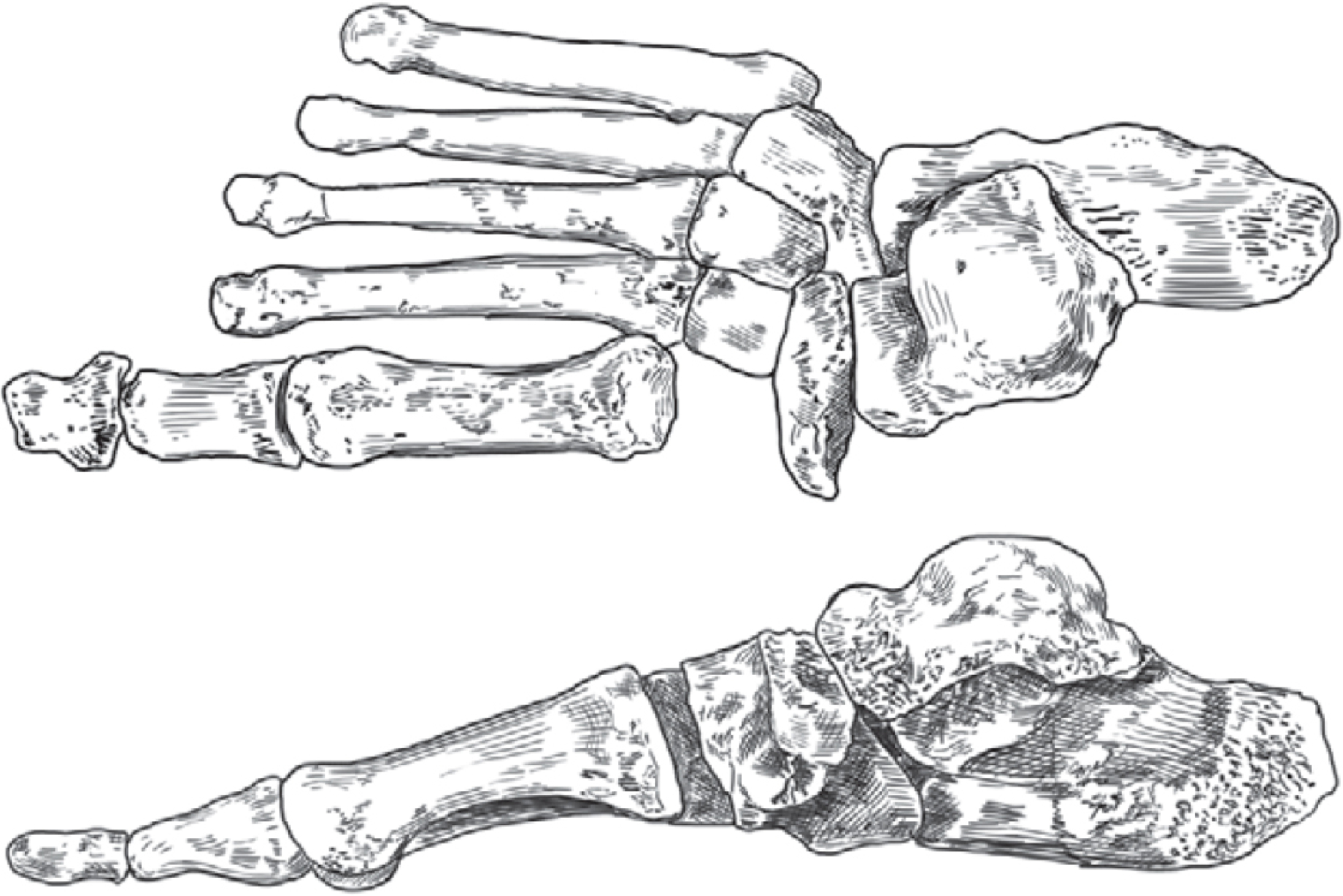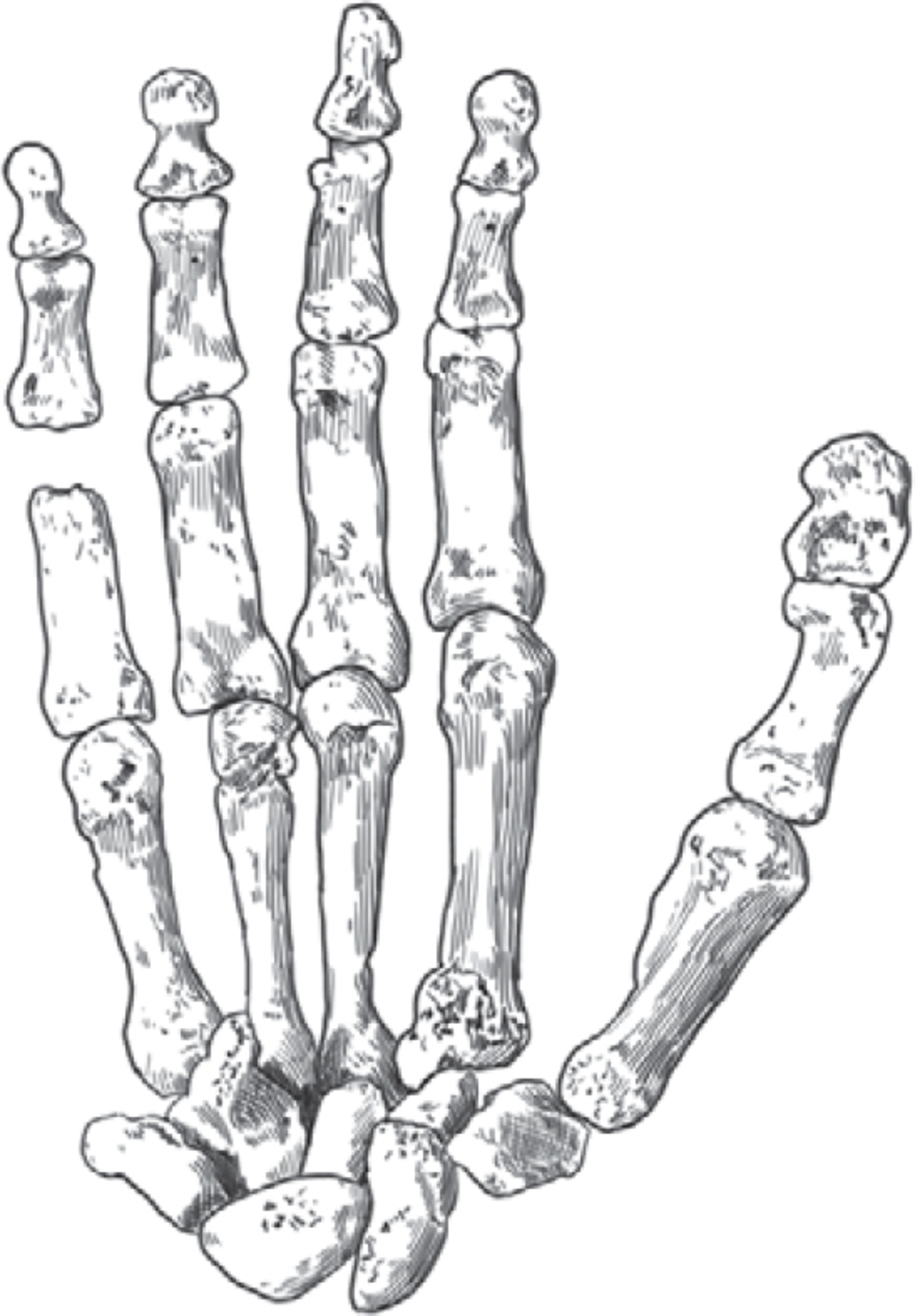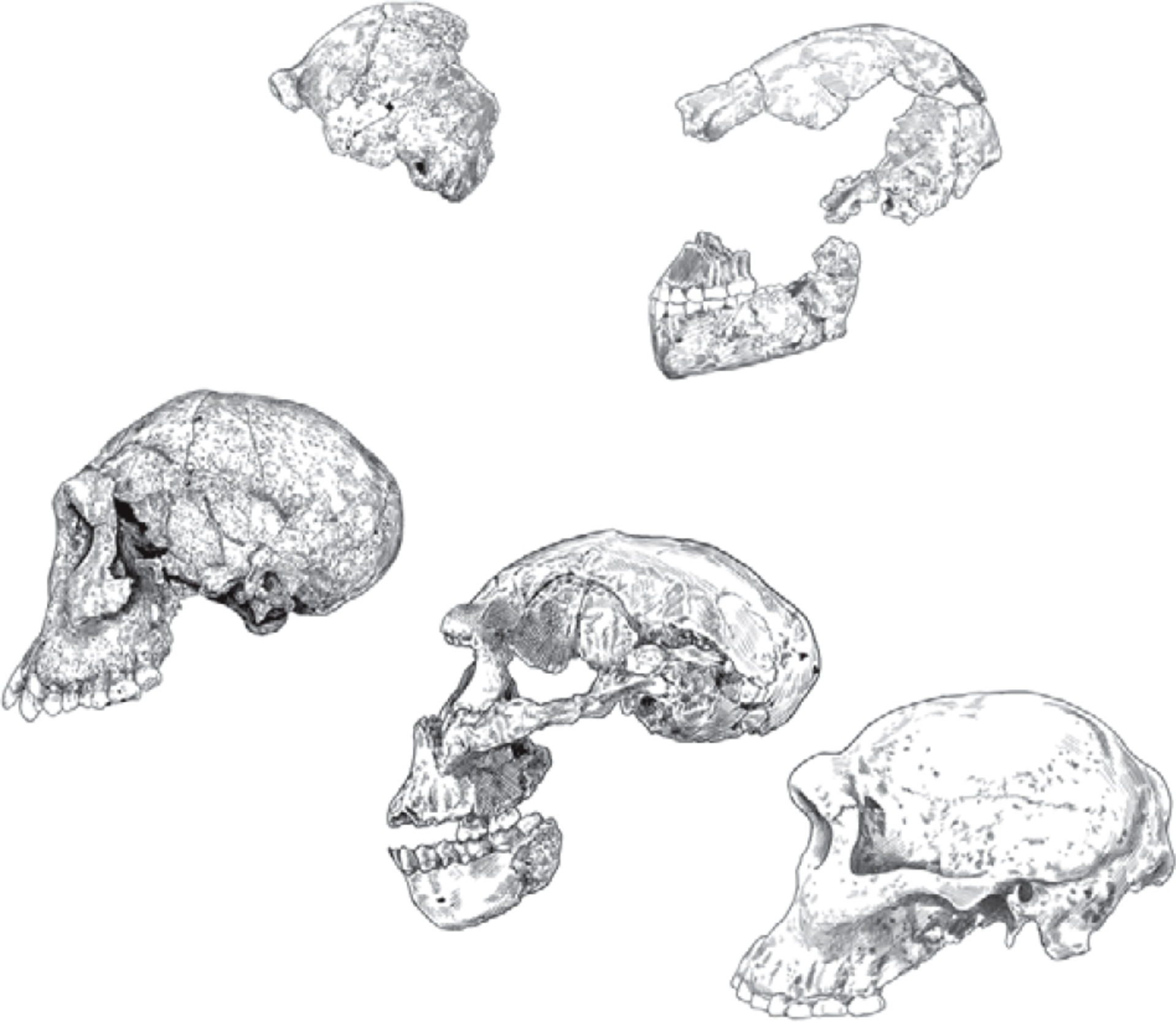27
And so the workshop participants set to work. Each attendee contributed expertise on a different part of the body or a different type of analysis, and they formed small teams: a team for the skulls and mandibles, a team for the teeth, a team for the feet and ankles, and so on. The plan was to prepare just over a dozen papers that would describe each aspect of the body in these new fossils, all at once. The members of the sediba team brought hands-on experience with the fossil hominin skeletons, and the workshop scientists who were new to the team had some of the most current data sets and techniques available.
We had gone out of our way to invite some scientists representing schools of thought or research teams that had been critical of our earlier sediba work. We wanted them to challenge our ideas and force us to question our own assumptions. During the expedition, we had developed some hypotheses about the fossils, but now the teams would compare each body part with the entire fossil record for that part. We knew from sediba that we couldn’t assume anything. The shape of the skull doesn’t necessarily tell you what the pelvis or the foot will look like.
We went to work in the new Phillip Tobias Primate and Hominid Fossil Laboratory. Phillip had passed away in 2012, too soon to see the sediba discovery, but the new fossil laboratory was a great tribute to his many contributions to the science. Three of its walls were lined with deep, glass-encased shelves. The first held the university’s remarkable collection of discoveries from nearly a century of South African paleoanthropology: the Taung Child, more than 500 specimens from Sterkfontein, the fossils Raymond Dart had found at Makapansgat, hominin remains from other sites, and the teeth from Gladysvale, among others.
A second wall held comparative material gathered by Phillip and others over the years: copies of fossil discoveries from other parts of the world; reconstructions of fossil specimens from Sterkfontein and Swartkrans; and ape, human, and monkey skulls of all ages, used for comparing anatomies. The vault contained almost every fossil cast we would need to study the anatomy of the new fossils: the Wits collection, filled in with loans from more than a dozen institutions that we would have on hand for the month.
A third wall had shelving meant to accommodate the next 50 years of new discoveries. The two sediba skeletons, in their protective cases, took up a small section of the cabinets. Days before, the fossils from Rising Star had been moved into the vault with the others. Row upon row of plastic storage trays filled the shelves, holding more than 1,500 fossil specimens, more than the rest of the fossil collection put together.
Once the lab stations were set up—“Hand Land” and “The Tooth Booth,” read signs posted by two of the teams—the fossils began to come out. Teams started working through the collection, piece by piece. The silence of concentration was punctuated by moments of surprise: “Wait a minute, what is that?” “Do you think that’s a piece of navicular?” Workshop scientists had their hands full, confirming identifications and describing every fragment. Even the least represented area, the pelvis, had more than 40 fragments in the collection. In the end, we had 150 hand and wrist bones, 190 teeth and pieces of tooth root, and more than 100 foot and ankle bones. The teams would closely scrutinize every last fragment for important features that could help diagnose these new fossils.
John Hawks and I acted initially as roving scientists, surveying the whole picture of research from all the different groups. The teams worked at their stations, learning all they could about the Rising Star fossils and comparing them with every piece of fossil material from South Africa, research casts of fossils from the rest of the world, and their own data sets, including measurements and digital models of still more fossils. After a week, each team briefed us on what the fossils had begun to tell them. We had developed some ideas as the bones came out of the ground. Now added data showed that many of our initial impressions were accurate—but there were other things we didn’t expect.


The most complete foot from the Rising Star site.
Bones of the four smaller toes are not depicted here.
The clearest example came from the foot team. Its four key scientists had more than a hundred bones to work with, and together they were able to put together parts of six feet. Considering what we knew about the skulls and teeth, we expected to hear that the foot bones would have a mix of features representative of different species, and that some interesting detail would set the Rising Star feet apart, just as the odd heel bone had for the sediba foot. So, it was surprising to hear that the Rising Star foot bones were nearly indistinguishable from those of modern human feet. These feet were different from the earliest bipeds, like afarensis, which were a bit flatter than ours, with longer toes. They didn’t match sediba. And they were more humanlike than the single crocodile-bitten foot from Olduvai Gorge that most scientists attributed to Homo habilis. The feet from the 101 Chamber were essentially human. Could this species, even with its small brain, be closer to humans than habilis was?
The hand told a more complicated story. Again, we had more than a hundred bones, including the star of the entire collection: the nearly complete hand uncovered by Becca and Marina during their March excavation work. Tracy Kivell, who had worked to describe the hand anatomy of sediba, was here at the workshop examining the Rising Star hand and wrist bones. She noticed right away the unusual thumb bone that all of us had seen in the field. “That first metacarpal is really weird,” she said. “I’ve never seen anything like it.” It was becoming a common refrain.
We had recovered seven copies of that bone from the cave, and all of them were alike: a first metacarpal unlike that of any other species. Humans have long and relatively powerful thumbs, and that means our wrists have to work differently from those of the great apes. We use our thumbs to grip things against the other fingers—especially in a pinching grip against the index finger. In prehistoric humans, those powerful grips were essential to making stone tools.
The sediba thumb had been tremendously long—longer even than in humans today. It was in a way hyperhuman. The tips of its finger bones were broad, likely supporting big fingertip pads. All in all, the sediba hand looked like it had the humanlike capacity to grip things powerfully. But the MH2 hand—the hand from the second Malapa individual—lacked several of the bones of the wrist, and what was there suggested that the index finger was not as well anchored to grip against the thumb as in humans.


The most complete of the hand remains from Rising Star.
The thumb is long, with a powerful metacarpal at its base.
The Rising Star hand had nearly all of the wrist bones, and they told a different story. The key is a small bone called the trapezoid, wedged between the base of the thumb and index finger. A chimpanzee trapezoid is shaped a bit like a pyramid—despite the bone’s name, it comes to an apex like a triangle, not a trapezoid. In humans, it lives up to its name, shaped as if someone took a cube of clay and pinched it halfway up the sides, making it into a little boot. That pinched part of the bone opens up onto the palm side of the wrist, where it helps stabilize the thumb and index finger when they grip each other. The Rising Star trapezoid bone was shaped like a human’s. Also, the fingertips were very broad—broader even than those of living humans—and the thumb was not quite sediba length, but still quite long for a human. Thumb, wrist, and fingertips all agreed—the hand was even more human than habilis, and more human than the hand of the Flores hominin skeleton.
There was a catch. As the team studied the finger bones, they found that they were strikingly curved—almost as if they had gripped around a log and melted into a curved shape. That kind of curvature developed in apes as a result of long use grasping branches, in contrast to humans, who developed very flat finger bones. The Rising Star hand was humanlike in its wrist and fingertips, but the fingers seemed to be made for climbing. The shoulder was built for climbing, too. As another team worked to understand the upper body—the shoulder blade, the collarbone, the upper part of the rib cage, and the bone of the upper arm—they found that the shoulders had been canted upward, the arms oriented for climbing. The feet and parts of the hands seemed more humanlike, but the fingers and shoulders were as primitive in appearance as the earliest known hominins—apelike species like Ardipithecus ramidus.
The legs, hips, and trunk told their own stories. As we had observed in the field, the neck and head of the femur were very much like those of australopith species—similar to sediba or afarensis—yet there were two ridges on the femur necks that we had never seen before in any other species. The pelvis would prove to match these long femur necks with a wide, flaring hip very much like Lucy’s, and the lower part of the rib cage seemed well suited for such a flaring pelvis. The spine was another story—each vertebra was relatively small, but with a relatively large canal for the spinal cord. The team had never seen this combination of vertebral traits before except in one form of hominin—the Neanderthals.
The picture emerging from the skull was equally mixed, but it took a bit longer to put together. Peter Schmid had gone back to work in his basement laboratory. In a white lab coat, he did the precise work that he loved, piecing together fragments to slowly reveal the shapes of bones and body. After a week, Peter had reconstructed almost all of the braincase of this skull—from the incredibly well-preserved rear, where the muscles of the neck had left their markings, up to the forehead. With the nearly complete mandible and left half of the upper jaw, the skull was the most beautiful example the collection had yet produced. Peter brought it into the fossil vault, beaming with satisfaction. It was a beautiful thing. The cranial team crowded around their station, looking at the four disconnected pieces of this nearly complete skull and wishing they had the parts to connect them.

THE LABORATORY THAT MONTH was full of laser scanners. The workshop scientists had brought more than 10 of them and had set them up on every spare tabletop. Each scanner shot a red laser line out in front of a camera, recording the three-dimensional shape of a bone by slowly tracing the line across the bone surface. Many times, the lab would fall completely silent, 20 or more people working quietly at their stations, with hardly a sound except for the periodic whir of a laser turntable. After a half hour, a complete three-dimensional model would appear on the linked computer screen.
Heather Garvin, a forensic anthropologist from Mercyhurst University and part of the cranial team, had been scanning parts of the skull and jawbones. One day, she opened her laptop. “See what you think of this,” she said. There it was, on the screen, not in pieces anymore but reconstructed into the shape of a complete skull. It took our breath away.
“Turn it sideways, to show the lateral view,” said Peter. “There, very good, not bad, not bad. But I think the mandible and maxilla should be rotated slightly lower. Here, like this one.”
Peter opened his own laptop. On the screen was the skull. He had taken photographs of each piece, at scale and in correct anatomical orientation, and had used Photoshop to elaborately move the pieces into their correct positions. And unlike the slightly cartoonlike three-dimensional model, this one showed the skull in stunning photographic detail. Again, our jaws dropped. The two reconstructions—one with old technology, and one with new—were a near match.
The virtual reconstruction allowed Heather to estimate the volume within the skull, which corresponds approximately to the size of the brain. It was around 560 cubic centimeters, about the size of many larger male australopith skulls, and at the small end for Homo habilis. We now thought the smaller skull we had recovered in the field, with its thin browridge, was probably a female. Its volume was smaller, around 450 cubic centimeters, the size of many female australopiths and just a bit bigger than the beautifully complete MH1 skull of sediba, a juvenile male.
The size itself was not a surprise. Ever since I had held that first portion of the skull—the fossil mandible Marina and Becca had first brought up—it was obvious it was going to be a small one. But its size did not seem to match its anatomy. That thin, little browridge, sticking out from the forehead like a mini-shelf, made it look like a tiny Homo erectus skull.
In fact, it looked quite a lot like skulls found in Dmanisi, in the Republic of Georgia. There, five skulls and assorted other parts of skeletons had been found during the past 20 years, all assigned to the species Homo erectus. An estimated 1.8 million years old, the Dmanisi remains were the earliest hominin remains ever discovered outside of Africa, and possibly the earliest examples of Homo erectus anywhere. The five Dmanisi skulls were small for erectus, the smallest close to that found in the 101 Chamber, with a brain size of 550 cubic centimeters, and the others from 600 up to 750 cubic centimeters. Other bones were there as well, representing an anatomy that was, in some ways, primitive for erectus—with their small brain, body just about the size of a human pygmy, and fairly thin cranial bones.


Three of the skulls from Dmanisi at the bottom, compared with two partial skulls from Rising Star at top
Dmanisi was a very important comparison for us. As the cranial team worked, they began to compare measurements of the shape of the skull, finding that the Dmanisi skulls were among the closest examples to our Rising Star cranial sample. Yet other characteristics were closer to species that had branched earlier in our family tree, including Homo habilis and Homo rudolfensis. The tooth team was finding, for example, that the teeth of the 101 Chamber hominins seemed to fit with those of species like erectus, habilis, and rudolfensis—but they did not have all the features of any of those species, and they had several features that clearly distinguished them from each.
Other distinctive aspects of the Rising Star species were coming to light. People sometimes ask us how we know that all the bones from the 101 Chamber really represent a single kind of hominin. The answer is in the incredible similarity of the bones that we found. That strange form of the first metacarpal, for example, was shared by seven different examples of the bone found in the Chamber. The front lower premolar also had a strange form that we had never seen in other hominins, and again every example from the site showed the same set of features. The sizes of the bones and teeth were all very much alike. This implied not only that the bones might come from a single population, but also that the amount of difference between adult males and females was quite small.
The measurements coming from the different teams allowed us to estimate the size of the adult body: weight between 90 and 120 pounds, height from four feet six inches to five feet. In other words, they were the size of very small-bodied humans today. The teeth told us that we had brought at least 15 individuals out of the cave, although with all the bones remaining in the cave—maybe thousands—we suspected there are many more. These 15 individuals included at least eight children of various ages, from infants to adolescents. And one older adult, with teeth worn down to the roots, had probably reached the late 30s or older.

GRADUALLY, DIFFERENT TEAMS BEGAN to compare notes. Over the next week, I heard many gasps and some nervous giggling, and I saw a lot of head shaking. Nothing was adding up to any species we knew already. The feet seemed like human feet. The shoulders were like those of some primitive hominin. But almost every other part of the skeleton was a mosaic. The blades of the hip bones—the ilia—were like Lucy’s, but the lower pelvis—the ischia—was more like a human’s. The hands had humanlike wrists and curved fingers. The teeth had primitive proportions but were like modern human teeth in size. Overall, everyone quickly came to the same conclusion: We had not only a new hominin species but also one that showed a mosaic of morphologies—a combination of body characteristics that had never before been seen in any other species.
With sediba, we had faced a similar scenario, which came down to the difficult question of which genus we should choose for the fossils: Homo, like us, or Australopithecus, like much more primitive fossil species. Here, with the Rising Star fossils, we had the same question. But in this case, the solution seemed easier. Sediba had a face and hips like humans, but in most aspects of its body, it was like australopiths—and a few features were even like those of apes. The Rising Star fossils shared three key features with Homo: Their hands were well suited for manipulating objects, and probably toolmaking—even more so than species like Homo habilis or Homo floresiensis. Their teeth were adapted for a high-quality diet, like all members of Homo. Their body size, and in particular their legs and feet, were humanlike. All three were key aspects of the way that humans and our close relatives have worked, moved, and lived within the environment. Besides this, the shape and features of the skull were distinctly humanlike. The small brain and primitive features of the skeleton were important, but they did not detract from the overall picture.
This was Homo.